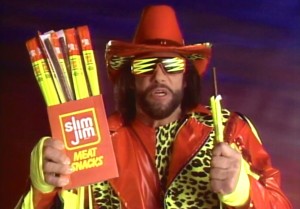Over time, brands need refreshing. Without some types of updates to the image, you can be stuck in the past with an outdated position that feels static. A simple change like Kentucky Fried Chicken to KFC can make a big difference in how a brand is perceived, especially with a new audience.
But not all rebranding is the same – some are evolutionary, and some are revolutionary.
Evolutionary rebranding can involve an update to a logo. It could require a shift in packaging or even how you get products and services to consumers. Evolutionary rebranding is often adjacent and close-in. Evolutionary change is like getting a new wardrobe every few years to remain current and in style. Perhaps the logo is simplified, and you remove extraneous elements to get closer to the essence of the brand. All brands need to be considering this type of update every few years so that the energy surrounding the brand and the business doesn’t become stale.
Companies that take an evolutionary approach might change their name and leave behind baggage that is no longer relevant. Should Kmart and Sears have considered this approach? When JCPenny tried to aggressively reposition itself away from its deep discounting roots, the change didn’t stick. Apple Computer successfully became Apple and today it sells more iPhones than computers; Starbucks Coffee Shops become Starbucks – straightforward and sensible.
Revolutionary rebranding can mean going beyond updating to repositioning the brand to stand for something new leaving the old image in the past. Often this is a radical shift in a whole new direction like moving from selling products in stores and selling directly to consumers. Or, a business model that rejects the past like when America Online stopped charging for email subscriptions and it became free, as AOL emerged as a portal.
The Pitfalls and Opportunity of Rebranding
But repositioning a brand is revolutionary and can be high risk/high reward. This approach leaves the past behind and moves you from the last decade to the next ten years. It is forward-looking and often requires a significant shift in image, business model and even the products/services sold. IBM left behind hardware and moved aggressively to bring IT solutions and consulting to the forefront of their rebranding. GE is positioning itself as an industrial company where digital transformation is as important as physical manufacturing. Their recent advertising campaign is aggressively trying to get you to see them as both connected to their past but moving toward the future.
Change can occur at the corporate level, at the business unit or even the product. What you keep and what you discard all feeds into how the brand will be perceived. Are you leaving behind the business you were in and pivoting toward an entirely different approach?
- Imagine if General Motors stopped what they are currently doing and rebranded as UBER. Would that have worked? Could their culture have created something so radically different?
- Think of Google getting into self-driving cars? What is the link behind what Google stood for (search) and what this new venture entails? (Freeing up people to spend more time online?) Does Google have a culture that can allow them to make a radical shift in a brand new industry?
- When Clorox buys Burt’s Bees, it couldn’t combine those names together. They wisely recognized that sometimes you need to leave things alone. Ask Ben & Jerry about their deal with Unilever. They wanted to protect the cultural aspects of the brand knowing it would influence loyalty and sales.
Why is the change occurring?
If you are rebranding because you want to fix a problem you have, the change may fail.
When you rebrand to fit into an evolving worldview, you may be able to make a brand adjustment if an adjacent position isn’t too far from the past. A wine brand extending itself into spirits or beer might work. A milk brand trying to get into wine makes no sense.
The key to rebranding is to answer a simple question:
What reason will your customer have to believe the transition you are making?
Does it come from a genuine belief in something new and different? Do you offer products that demonstrate that the change isn’t window dressing? When V8 wanted to move away from being only about tomato juice, they created V8Splash that allowed them to focus on health, wellness, and nutrition that comes from vegetables AND fruits.
Wal-Mart can’t change from being about low prices to being about high-end fashion, and Nordstroms will have a hard time with little, discounting prices on apparel. There is no reason to believe either could reposition so far away from their core.
Any rebranding needs to keep the customer benefit front and center. You can’t rebrand to help yourself; you need to be bringing a fresh new benefit to the client.
I like to think of rebranding as creating a new narrative that fits with an evolving vision your customer has about their needs.
What new story do you need to be telling today?
Are you considering refreshing, changing or a full-scale rebrand? Avoid some pitfalls, and let’s discuss it together. Email me at jeffreylynnslater@gmail.com
Photo credit: https://www.flickr.com/photos/stendueland/with/15343579766/

Repositioning Slim Jims
Need a little excitement? Snap into some marketing advice.




